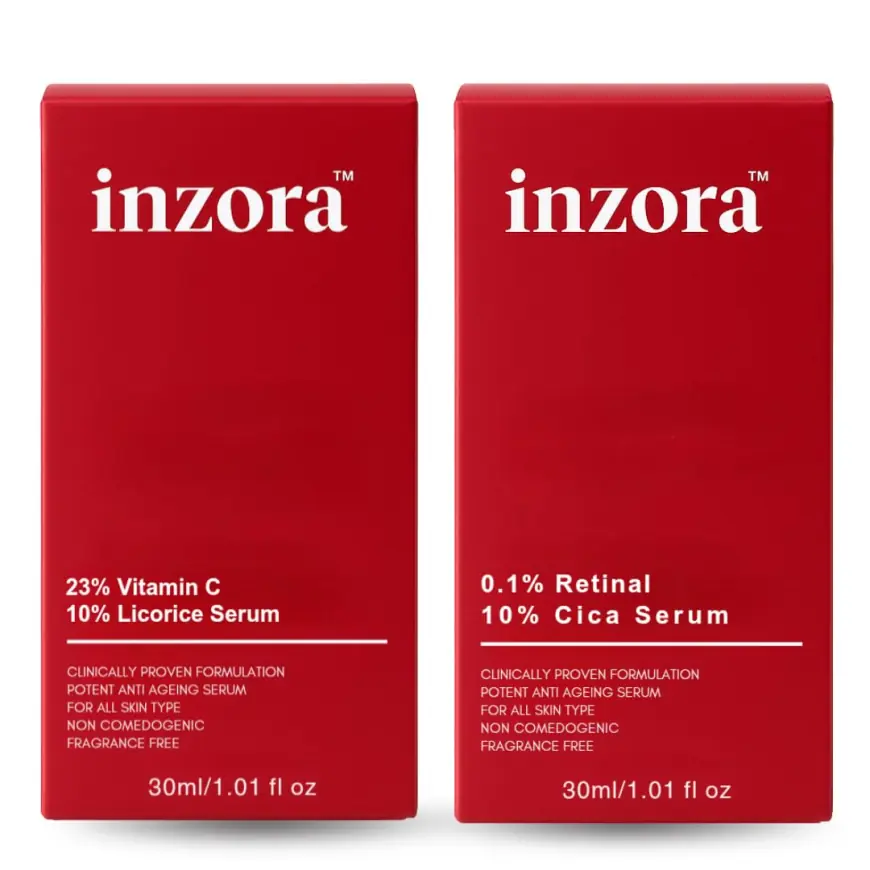Retinal Serum for Anti-Aging: Does It Really Work?
Discover how retinal serum fights fine lines, wrinkles, and dullness. Learn if it truly works as an anti-aging solution for youthful, glowing skin.

When it comes to skincare, one ingredient that has been getting a lot of attention is retinal serum. Often compared to retinol, retinal is hailed as one of the most powerful solutions for tackling fine lines, wrinkles, and dullness. But does it really live up to the hype? Let’s dive deeper into how it works, its benefits, and whether it deserves a permanent spot in your routine.
What Is Retinal?
Retinal, short for retinaldehyde, is a vitamin A derivative that sits one step closer to retinoic acid—the active form your skin cells use—than retinol. Because it converts more efficiently, retinal works faster and can deliver visible anti-aging results in a shorter time frame. Unlike prescription-strength tretinoin, however, retinal is gentler, making it a good option for beginners who want effectiveness without too much irritation.
How Retinal Targets Aging
The science behind retinal’s effectiveness lies in its ability to speed up cell turnover and stimulate collagen production. As we age, our natural cell renewal process slows down, leading to fine lines, uneven skin tone, and loss of elasticity. Retinal helps reverse this by:
-
Reducing fine lines and wrinkles – Encourages new collagen production to smooth the skin.
-
Improving texture and tone – Fades rough patches and brightens dull complexions.
-
Fading dark spots – Helps lighten pigmentation caused by sun exposure or aging.
-
Boosting skin firmness – Strengthens skin structure, making it appear plumper and more youthful.
Retinal vs. Retinol: Which Is Better?
Both retinol and retinal belong to the retinoid family, but retinal is considered more potent. While retinol requires multiple conversion steps before becoming retinoic acid, retinal only needs one. This means it works faster while still being gentler than prescription alternatives. For someone serious about anti-aging but not ready for medical-grade treatments, retinal strikes the perfect balance.
How Long Before You See Results?
Patience is essential when using retinal. Unlike quick fixes, its benefits appear gradually with consistent use. Most people notice smoother texture and a subtle glow within four to six weeks. With long-term use (around three to six months), you can expect more dramatic improvements in fine lines, firmness, and evenness of tone.
Tips to Maximize Anti-Aging Benefits
To get the most out of retinal, it’s important to use it correctly:
-
Apply at night only – Retinal breaks down in sunlight, so it’s best used before bed.
-
Start slow – Begin with 2–3 applications per week and increase as your skin adjusts.
-
Pair with moisturizer – Hydration helps counter dryness or flakiness.
-
Never skip sunscreen – Since retinal makes skin more sensitive to UV rays, daily SPF is crucial.
-
Avoid harsh combinations – Don’t mix with strong exfoliants or acids in the same routine.
Who Should Use Retinal Serum?
Retinal is a great choice for people in their late 20s or 30s who are starting to notice early signs of aging. It’s also effective for more mature skin that wants visible improvement in fine lines, age spots, and elasticity. Those with sensitive skin should start with a lower concentration or use it less frequently until their skin builds tolerance.
Final Verdict: Does It Really Work?
The answer is yes—retinal serum does work, and research supports its ability to deliver noticeable anti-aging benefits. While it’s not an instant fix, consistent use can significantly improve skin health, radiance, and youthfulness over time. For anyone serious about slowing down the visible effects of aging, retinal is one of the most reliable and effective ingredients you can add to your routine.
What's Your Reaction?
 Like
0
Like
0
 Dislike
0
Dislike
0
 Love
0
Love
0
 Funny
0
Funny
0
 Angry
0
Angry
0
 Sad
0
Sad
0
 Wow
0
Wow
0

















































